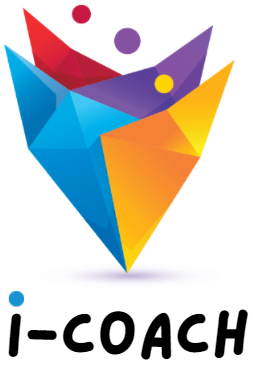The incorporation of the Triple Helix Model into the i-Coach Collaboration Model aims to create a synergy between academia, industry, and government to enhance work-based learning (WBL) opportunities, particularly through the i-Coach methodology.
Through close collaboration between academia and industry, the traditional barrier between theoretical learning and practical application is dismantled. This integration prompts a change in attitude among educators and students, who now recognize the real-world applicability of academic knowledge. By participating in internships and hands-on experiences, students acquire practical skills that enhance their capabilities and prepare them for the job market upon graduation.
Collaboration can play a crucial role in enhancing the relevance of the curriculum. When educators collaborate with industry experts, they gain a better understanding of industry needs, resulting in a positive shift in their attitudes toward industry demands. This openness allows them to adapt their curricula to align with the current trends in the industry. Moreover, educational institutions can utilize industry input to update their curricula, equipping students with the latest skills and knowledge, thereby increasing their capabilities and employability. Furthermore, collaboration also encourages the concept of lifelong learning among both educators and industry professionals. By continuously working together, individuals develop a culture of ongoing learning and skill development, rather than static knowledge acquisition. This change in attitude leads to greater capabilities and growth in both personal and professional aspects.
By working together, students, educators, and industry partners develop an entrepreneurial mindset. Innovation becomes a shared objective, leading to a positive shift in attitudes towards trying new things and taking risks. Partnerships between industry and academia drive research and innovation, providing opportunities for individuals to gain proficiency in advanced technologies and approaches. Collaborating with the government aids in shaping policies that foster WBL endeavors. Mindsets change from viewing regulations as obstacles to recognizing them as facilitators of productive partnerships. Clear and supportive policies enable individuals to develop the necessary abilities for successful cooperation.
The Triple Helix model has facilitated attitude and capability changes by fostering a collaborative environment where stakeholders appreciate the value of mutual engagement. This model has not only changed attitudes towards WBL but has also enhanced the capabilities of educators, students, and industry professionals, ensuring a workforce that is adaptable, skilled, and aligned with industry needs.
The involvement of key stakeholders
Beyond that, the involvement of key stakeholders is essential for the successful implementation of Work-Based Learning (WBL) initiatives. Each stakeholder group plays a unique role in shaping policies, providing resources, and ensuring the effectiveness of WBL programs. Here’s how each group contributes
- Small and Medium Enterprises (SMEs):
- Providing Real-World Experience: SMEs offer practical, industry-specific knowledge to students, enhancing their skills and employability.
- Internship Opportunities: SMEs can provide internship placements, allowing students to gain hands-on experience in a real workplace setting.
- Feedback Loops: SMEs can provide feedback to educational institutions, ensuring that the curriculum meets industry needs.
- Vocational Education and Training (VET) Trainers:
- Designing Relevant Curriculum: VET trainers develop a curriculum tailored to industry requirements, ensuring that students learn skills that are immediately applicable in the workforce.
- Practical Training: Trainers facilitate hands-on training sessions, preparing students for real workplace challenges.
- Continuous Improvement: They can provide feedback to institutions, helping them refine their training programs based on the evolving needs of the industry.
- Higher Education Institutions:
- Curriculum Development: Universities design comprehensive programs that incorporate theoretical knowledge and practical skills, ensuring a well-rounded education for students.
- Facilitating Partnerships: Universities can establish partnerships between students and SMEs, creating internship and apprenticeship opportunities.
- Research and Development: Universities can research WBL effectiveness, contributing valuable insights to the field.
- Non-Governmental Organizations (NGOs):
- Advocacy: NGOs can advocate for policies that support WBL initiatives, raising awareness about their importance in bridging the skills gap.
- Support Services: NGOs can provide support services to students, such as counseling and mentorship, enhancing their overall learning experience.
- Community Engagement: NGOs can engage with local communities, encouraging the participation of underprivileged or marginalized individuals in WBL programs.
- Government Authorities:
- Policy Development: Governments can develop policies that incentivize WBL, offering tax benefits or grants to companies participating in such programs.
- Regulation: Governments can regulate the quality of WBL programs, ensuring that they meet certain standards to provide valuable learning experiences.
- Funding: Allocate funds to educational institutions and organizations to support the development and implementation of WBL initiatives.
The collaboration and active participation of SMEs, VET trainers, higher education institutions, NGOs, and government authorities are crucial for the holistic development and success of Work-Based Learning programs. Each stakeholder group brings unique expertise and resources, contributing to the growth of a skilled and job-ready workforce.


